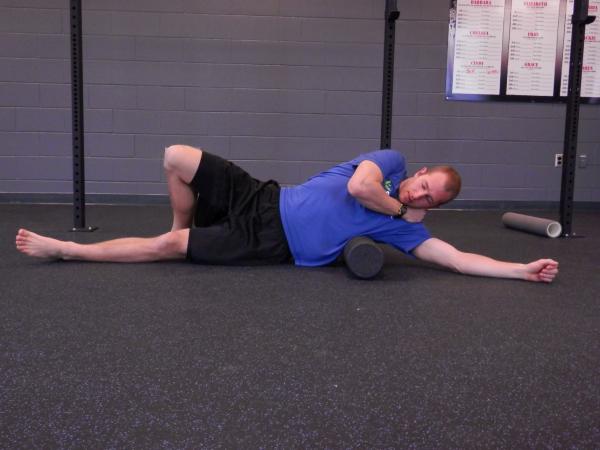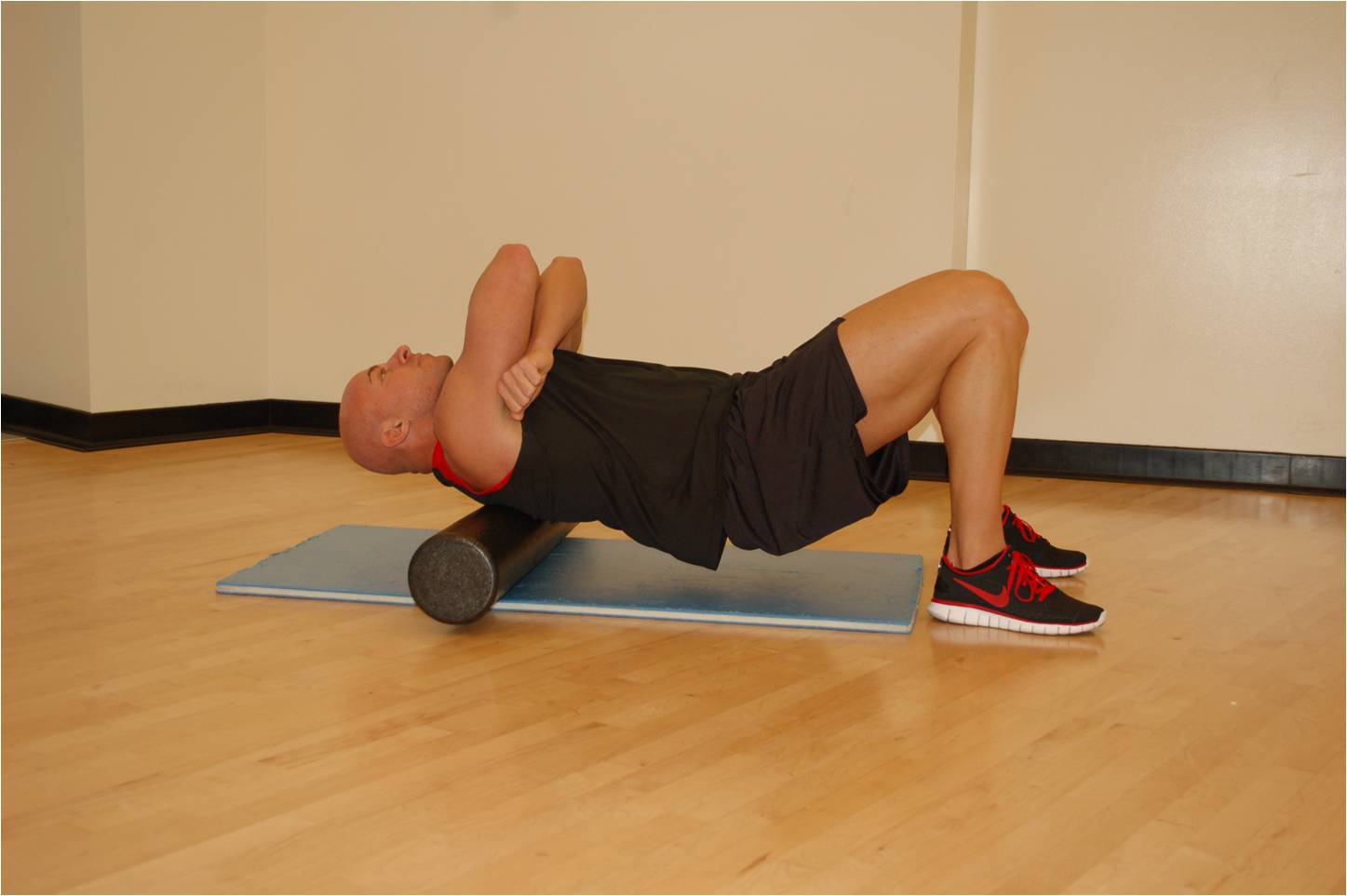Get ready for the second of our two part Road to Recovery: Shoulder Pain series. Today’s focus will be on shoulder pain exercises! If you missed the first part click here before continuing:
Road to Recovery: Shoulder Pain Injury
It is important to understand Thoracic Flexion and Extension in order to help treat and prevent shoulder pain.
If you have consistent shoulder pain, request an appointment. While the following shoulder pain exercises are meant to help you deal with the pain, you may have a more serious issue that requires specific treatment.
As a quick recap, if you sit a lot chances are in thoracic flexion a majority of the time. Prolonged periods of time in this position will cause tightness in the front of your body and lengthened and inactivity in the muscles of the back.
Even if you do not sit a lot during the day the following may still help you out.
Shoulder Pain Exercises: What Do I do?
Generally releasing tight muscles (in the case the chest) and learning to activate inactive muscles (lats) is a good place to start.
Here are a few tips to get started:
1 – Learn to use a Foam Roller
Once again foam rolling pops up when dealing with pain. Shoulder pain can indicate that the muscles of your back are in lengthened state, while the muscles of the chest are shortened.
The steps are always the same for Foam Rolling, the only difference will be the position of your body. Because we are focusing on shoulder pain exercises, the intended area is around the shoulder.
- Place the roller around the intended area.
- Do broad strokes and move the roller along the muscle. You can use your hands and feet to roll your body smoothly over the foam roller.
- Pinpoint certain trigger points – they will be the most tender spots on the muscle.
- Find one you can tolerate and keep pressure on that spot for 30-40 seconds. Remember to breathe!
- You will feel the pain/discomfort dissipate.
- Once gone, mostly gone, or the 30-40 seconds is up, move on to the next trigger point.
- Repeat for allotted time.
[divider height=”1″ width=”250px” bg_color=”#34ceda” margin_top=”20″ margin_bottom=”20″ alignment=”center” display_icon=”off” /]
In need of Shoulder Pain Rehabilitation? Schedule an Appointment Today!
If you have any questions, or want a consultation with a professional, feel free to call, or schedule an appointment online at any of our Bergen County or Passaic County offices in New Jersey. Choose from Glen Rock, Franklin Lakes, Fair Lawn, Ho-ho-kus/Ridgewood, and/or Clifton – we make it possible for you to visit any of our offices at your convenience.
[divider height=”1″ width=”250px” bg_color=”#34ceda” margin_top=”20″ margin_bottom=”20″ alignment=”center” display_icon=”off” /]
Shoulder pain exercises should focus on these areas:
Lats
- Lay on your side with the foam roller in your armpit.
- The arm of the side on the ground should be stretched overhead with the elbow locked.
- Your bottom leg will be straight out while the top one is bent and helping you roll up and down the side of your upper body.
- The top hand can be placed behind your head to support your neck.
- Follow the general steps for foam rolling.
 Back
Back
- Lay with your back
on the roller. - Give yourself a hug.
- Roll up and down your back.
- Follow the general steps for foam rolling.
Chest
- Lay on stomach adjacent to foam roller
- With palm facing down reach arm out to the side.
- Foam roller should be on the inside of the shoulder and outside of chest.
- Slowly roll outward and in stopping on tender areas.
Try foam rolling before and after exercise.
Foam rollers help decrease tension in muscles. You can foam roll before, during, or after exercise. If you are in pain, the best bet is to foam roll multiple times every day until you get relief. You can then cut back to once per day, then a few times per week.
Be aware that foam rolling is not meant to be comfortable.
Foam rollers come in different firmness levels. When starting off it may be a good idea to use a less firm roller.
2 – Learn to pack your shoulder.
What is packing the shoulder? Well first understand that the shoulder joint has high amounts of mobility which is a good thing because it allows us to move through space (forward, backward, up, down, side to side). Unfortunately the cost of mobility is stability. The lack of stability opens it up to injury.
Shoulder packing refers to positioning the joint in the best possible way to stabilize it. Packing the shoulder will not only protect it, but will also give you more leverage when doing pulling or pressing movements such as Lat Pulldowns or Bench Pressing. Depending on how you are moving, this may be a bit different, but the basic principle is always the same– shoulders down and back.
To pack your shoulder:
- Stand up or sit up straight.
- Push your chest out.
Try the shoulder pain exercises AFTER foam rolling but BEFORE you workout to help warm up the shoulder.
Shoulder External Rotation
- Grab some light exercise tubing or band.
- With your elbows on your sides and bent 90 degrees grab the band with your palms up.
- Move your hands apart while trying to prevent your elbows from moving and squeezing your shoulder blades together.
[footer title=”Do you, or someone you know need back pain rehabilitation? We can help you get on the Road to Recovery with a simple consultation.”]

